McGill Up Close (Page 2)
Tulips, James McGill's Tomb.
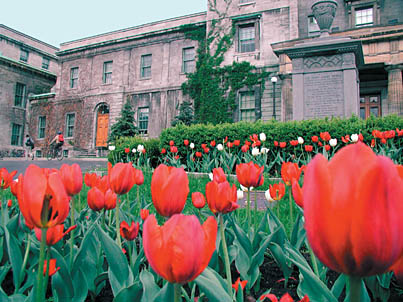
"Peacefully he slumbers there, blissful though we're on the tear." Our founder has not always rested so easily. After his death in 1813, his remains were interred in the Protestant Burying Ground on Dorchester Street, which was then on the outskirts of Montreal. In 1873, the city expropriated the cemetery to make room for a public square and the University quickly arranged for removal of the monument and the remains of James McGill to the current site in front of the Arts Building. On June 23, 1875, the new site was consecrated by the Church of England. About 25 years later, a gingko tree was planted in front of the monument, a gift from Japan to Botany Professor David Penhallow. Ever since the gingko succumbed to disease in 1967, the tomb has been surrounded with a lovely garden.
Exterior Dedication Wall, M.H. Wong Building, Departments of Chemical and Mining, Metals and Materials Engineering.
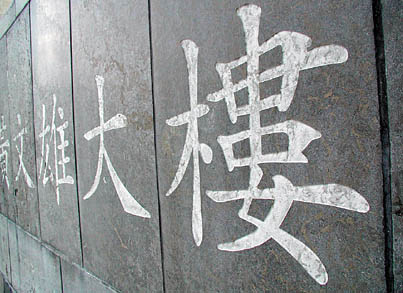
When the M.H. Wong Building was officially opened in 1997, it was the first new academic building on the downtown campus in almost 20 years. It was named in honour of its largest benefactor, the late Jimmy Man-Hung Wong, a McGill architecture graduate from Hong Kong. The building is situated on a site previously occupied by the Eaton Electronics Research Laboratory and the Foster Radiation Laboratory and Cyclotron. The characters pictured here on the exterior wall spell out the name of the building. Another inscription in the building's lobby bears an old Chinese proverb: "When you drink from the water, consider its source."
Detail, James McGill Statue.

The handsome statue of our founder located on the lower campus close to the Roddick Gates was donated by the McGill Associates, a group of Montreal-area professional and business people. This bronze statue is the work of sculptor David Roper-Curzon and was unveiled in 1996 for the University's 175th anniversary. During Frosh Week, the statue is frequently seen with a cup of beer perched on James McGill's hand.
Staircase, Duggan House, International Education Office.
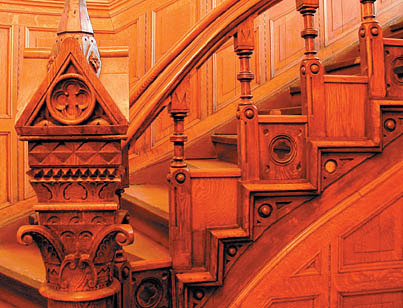
This impressive staircase is found in a Gothic mansion on McTavish Street once known as Braehead. The house was purchased by George H. Duggan in 1929, who lived there until his death in 1946, when it was bequeathed to McGill and the house was given to the School of Commerce. The mansion, once used as a convalescent hospital for soldiers, remains today much as it was, and in 1977 it saw the Faculty of Education move in.
Detail, Ironwork, Redpath Museum.
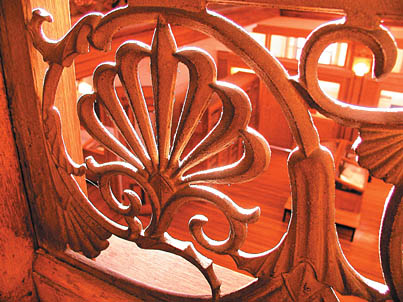
McGill's Redpath Museum opened in 1882, a gift from sugar baron Peter Redpath as a tribute on the 25th anniversary of Sir William Dawson's tenure as principal of the University. Initially, it served to house Dawson's natural history collection. Its collections now include mummies, Greek and Roman coins, and a large dinosaur skeleton. The museum has recently undergone a major renovation and will celebrate its 125th anniversary in 2007.
Entrance, Peterson Hall, Department of French Language and Literature.
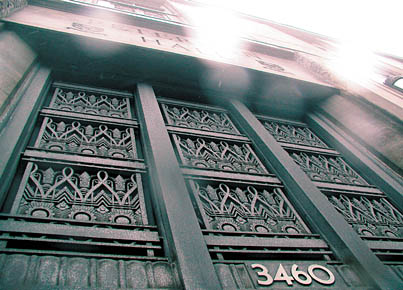
Peterson Hall was built in 1933 and is the former McTavish Street home of the Protestant School Board of Greater Montreal. In 1960, it was purchased by McGill for the use of the French Language and Literature Department, and renamed Peterson Hall after Sir William Peterson, principal of McGill from 1895 to 1919. This is a view of the decorative iron work over the entrance.


